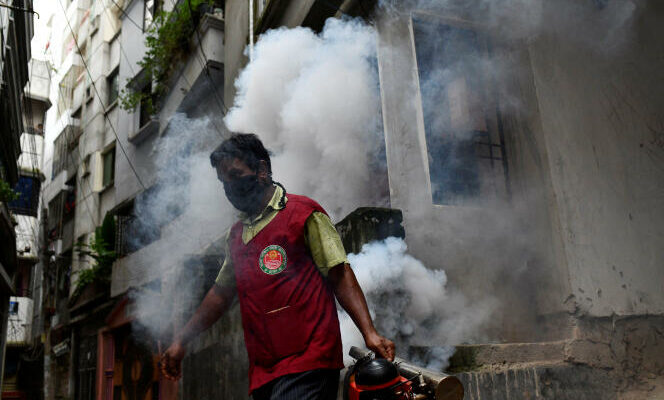Dozens of feverish patients on drips are lying on beds, lined up one after the other, in a large room. Families at the bedside of their suffering loved one massage their arms and legs to try to relieve their aches. “I have been sick for more than ten days”Mehdi Hassan articulates with difficulty, Monday November 27, before going back to bed, struck down like the others by the dengue virus.
This tuk-tuk driver, from a village located around a hundred kilometers from Dhaka, was admitted two days ago to Mugda Medical College and Hospital, a public establishment in the Bangladeshi capital. There is no treatment for dengue fever and only the most serious cases require hospitalization. This virus, transmitted to humans by infected mosquitoes, causes high fevers, headaches, nausea, vomiting, but also intense muscle and joint pain and can even cause the death of the patient. .
Never before has Bangladesh experienced such an explosion of cases. Between 1er January and 1er December 2023, more than 310,000 people have been infected by the virus and 1,628 have died, according to official figures. This is the deadliest year since the first dengue outbreak recorded in the country in 2000. The current death toll is already more than five times higher than last year, when the country recorded 281 deaths linked to the virus.
“Many of them did not survive”
“This year, we are once again facing a real dengue epidemic even though the government has not officially declared it as such”says Manjur Ahmed Chowdhury, who heads the Center for Governance Studies, a think tank based in Bangladesh. “We also know that for every officially recorded case, twenty others are not, so we estimate that the figures are in reality twenty times higher”continues this entomologist.
“At the peak of the crisis, we were treating thousands of patients and it was difficult for us to ensure adequate follow-up, many of them did not survive”, confirms Madhuri Roy, specially detached from another establishment at the start of the monsoon season to take care of dengue cases in Mudga, with increasingly aging infrastructure and which seems to lack everything – including nursing staff. During the months of July and August, the influx of dengue patients was such that the 10e and 11e floors were requisitioned for them. Hospitals were on the verge of explosion. “The beds were full, patients were seated on the floor, even on the balconies and in front of the elevator entrances”remembers the doctor.
You have 55% of this article left to read. The rest is reserved for subscribers.
